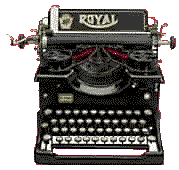|
Ben R. Ogletree, III, a Texas fireman, describes, Sunday, June 27, 2004, how his team search for, and found, remains of the Columbia space shuttle 
How we did find that astronaut's helmet I FOUND your website during a recent web search in which I was looking for information on the Columbia astronaut's helmet. I was in the small search group that found the helmet and reported it to our command post. Here is how events played out:
Upon reaching our new search area, local citizens began approaching us with reports of debris on and around their homes and in their hay pastures. Our team began its search and after walking perhaps 400 yards through a hay field, found the helmet. It was less than 100 yards from the driveway of rural home. The photos you have seen are representative of how the helmet was found, upright without faceplate or any other identifying marks. The exterior was remarkably intact, but the interior showed signs of scorching and there was nothing left of the interior of the helmet but the shell. We reported the find to our command post and were given orders to secure the area and remain in place. Not long after reporting the find to the command post, news reporters from the local TV affiliate showed up and began filming the scene. After their arrival, some yellow crime scene tape was found and used to cordon off the area. We continued searching the area and found the rear half sole of an astronaut's boot, food tins and various metal parts and wiring. Shortly before sundown a NASA vehicle arrived with four astronauts. They confirmed that both the helmet and the boot sole were NASA astronaut equipment. Two of the astronauts separated from the group and began a number of cell phone calls to Johnson Space Center in Houston. After their phone calls, we assisted them in recovering the items before dark. GPS coordinates and numerous photos for each item were taken, then these items were bagged, tagged and signed for. The astronauts left with the items. We had been given orders not to take any "personal" photos and that all cameras would be confiscated. I took digital photos of the items that were found to turn in with them as part of the record. My photos became redundant when the NASA personnel arrived and began taking their own photos. I was never asked to turn in my photos and still have them. Also have a few minutes of video as well. We were fortunate to find these items because they fell very close to a home that was surrounded by substantial hay pastures in a very rural, heavily forested area. I returned two additional times to assist in searching for debris. Both times the search areas were a mix of open ranch land and dense forest. Most of the debris found these two days was in the open pasture, in natural clearings or areas opened up by recent logging activity. I hope you find this information useful to your debate.
| ||||||||
 I
am a member of Livingston, Texas Fire & Rescue,
located about 45 miles south of the Columbia debris
field. Immediately after the crash, we were called
on to respond to the accident. Our initial orders
were to respond to Lufkin, Texas. As we drove
north, we were ordered further east until we
arrived in the Hemphill, Texas area. Upon checking
in at the command post, we were assigned an area to
search. While driving to this search area, reports
came in that "items of interest" (the term we were
told to use on the open frequencies for human
remains) had been found in an area and they were
reassigning us to an area contiguous to that. We
were told that recovery of human remains were our
first priority.
I
am a member of Livingston, Texas Fire & Rescue,
located about 45 miles south of the Columbia debris
field. Immediately after the crash, we were called
on to respond to the accident. Our initial orders
were to respond to Lufkin, Texas. As we drove
north, we were ordered further east until we
arrived in the Hemphill, Texas area. Upon checking
in at the command post, we were assigned an area to
search. While driving to this search area, reports
came in that "items of interest" (the term we were
told to use on the open frequencies for human
remains) had been found in an area and they were
reassigning us to an area contiguous to that. We
were told that recovery of human remains were our
first priority.